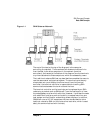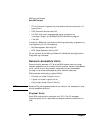
Chapter 1 25
SNA Terms and Concepts
Systems Network Architecture
Systems Network Architecture
Systems Network Architecture (SNA) is an IBM data communication
architecture that specifies common conventions for communicating
among a wide variety of hardware and software data communication
products. This architecture consists of two kinds of definitions: formats
that define the layout of messages exchanged by network components,
and protocols that define the actions that network components take in
response to messages.
An SNA network is a collection of computers that are linked together and
communicate using SNA.
Originally, SNA was designed to enable communications with a host
computer. Each network or sub-network was controlled by the host; other
computers communicated directly with the host, but not with each other.
This older, host-controlled style of network is often referred to as subarea
SNA. SNA has since developed to support direct peer-to-peer
communications between computers in the network, without requiring a
host. This newer, peer-level networking is APPN.
Many SNA networks have elements of both subarea and peer-to-peer
networking. As networks migrate from subarea SNA to APPN, an
APPN-capable host may act to control older systems while also acting as
a peer to newer systems. Similarly, a single computer may access both
peer computers (in an APPN network) and an older host; its
communications with the host are controlled by the host, but its
communications with other computers are peer-to-peer and do not
involve the host.


















